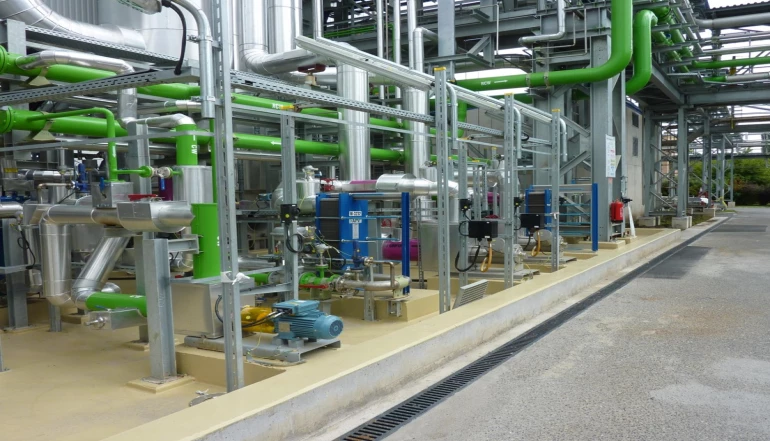Industrial Formaldehyde Production Plants: Pioneering a Versatile Chemical Compound
Industrial Formaldehyde Production Plants are specialized facilities designed to manufacture formaldehyde, a crucial organic compound with a wide range of applications across industries. Formaldehyde is a colorless gas with a strong, distinct odor, and it is a vital precursor for various chemicals and materials utilized in daily life.
Key Methods of Formaldehyde Production:
-
Methanol Oxidation Process:
The Methanol Oxidation Process involves the oxidation of methanol, typically using a silver catalyst, to produce formaldehyde. The reaction occurs at high temperatures and yields formaldehyde as the main product.
-
Formose Reaction:
The Formose Reaction, also known as the Butlerow synthesis, involves the condensation of formaldehyde and its subsequent polymerization to create longer-chain oligomers. These oligomers can be depolymerized to obtain formaldehyde.
-
Methyl Formate Hydrolysis:
Methyl Formate Hydrolysis involves hydrolyzing methyl formate, a compound derived from methanol and carbon monoxide, to produce formaldehyde and formic acid. The formaldehyde is then extracted from the reaction mixture.
Key Components of Formaldehyde Production Plants:
-
Methanol Feedstock System:
Methanol is a primary raw material for formaldehyde production. The methanol feedstock system includes storage tanks, pumps, and associated piping to transport methanol to the production unit.
-
Reactor and Catalytic System:
The reactor and catalytic system play a critical role in the chosen method of formaldehyde production. Different catalysts and reactor designs are utilized based on the selected production process.
-
Absorption and Recovery Units:
These units are responsible for absorbing formaldehyde gas into a liquid medium, where it is then recovered and further processed to achieve the desired concentration and purity.
-
Distillation Units:
Distillation units are used to separate formaldehyde from the reaction mixture and other by-products. This is a crucial step in achieving the desired concentration and quality of formaldehyde.
Importance of Formaldehyde Production Plants:
-
Wood Products Manufacturing: Formaldehyde is a key component in the production of wood adhesives, enabling the manufacture of plywood, particleboard, and fiberboard.
-
Resins and Plastics: Formaldehyde is a precursor for various resins, including urea-formaldehyde, phenol-formaldehyde, and melamine-formaldehyde, which are extensively used in plastics, laminates, and coatings.
-
Textiles and Paper Industry: Formaldehyde-based resins are used in the textile industry to enhance wrinkle resistance and durability. In the paper industry, it is used as a preservative.
-
Medical and Pharmaceutical Applications: Formaldehyde is a vital ingredient in disinfectants, embalming agents, and is used in certain pharmaceutical preparations.
-
Automotive and Construction: Formaldehyde-based resins are used in the automotive sector for manufacturing composite materials, and in the construction industry for insulation and other building materials.
Industrial Formaldehyde Production Plants are at the forefront of providing this essential chemical, enabling various industries to create products essential for modern living, construction, manufacturing, and healthcare. The versatility of formaldehyde continues to drive advancements in its production methods and applications.


